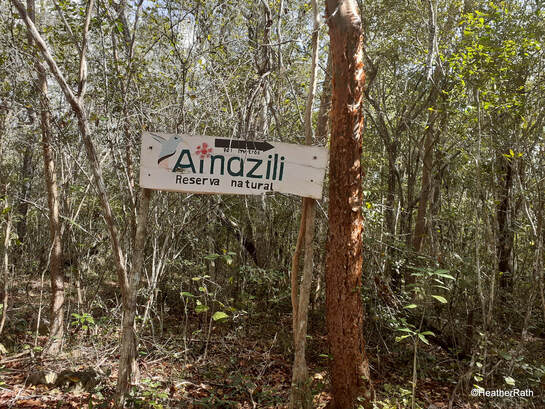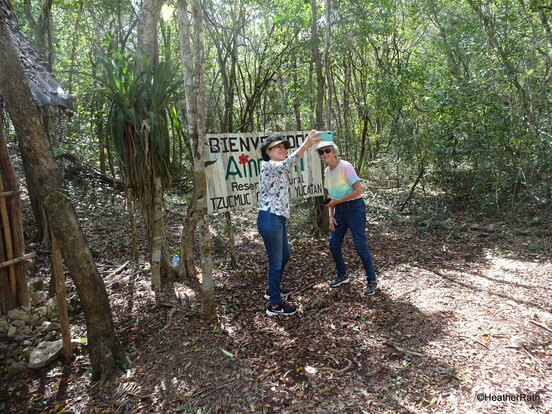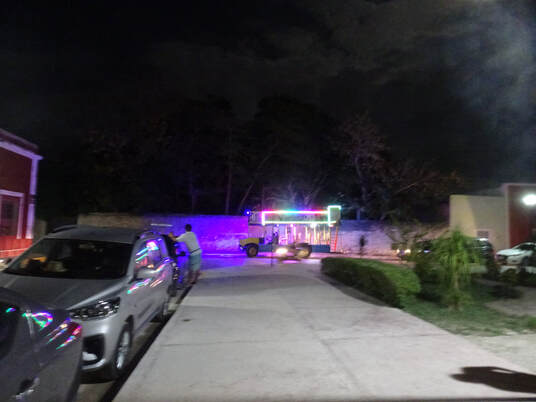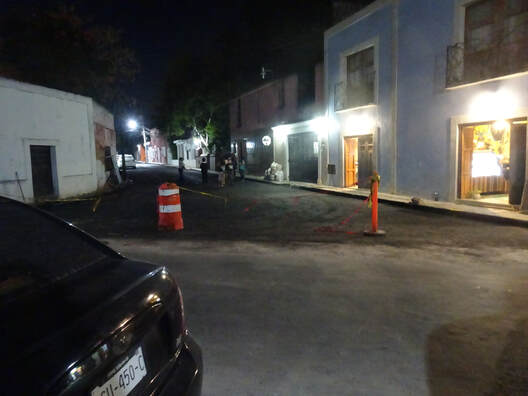It’s like looking for a needle in a haystack. But in this case, it’s searching in the middle of a jungle in the Yucatán peninsula for a wildlife centre.
This wildlife haven, called Amazili, is described in official but unexciting terms: we are a Nature Reserve located in Tzucmuc, Chankom, Yucatan, Mexico. Our focus is the protection and conservation of flora and fauna through ecotourism and community tourism. Every project has a team that works every day so that it can function in the best way.
Surely with such lofty goals, this will be an easy find!
When we mention this planned excursion to our Yucatecan neighbours, they express surprise. “We’ve never heard of it!” they exclaim.
“Come with us,” we suggest…especially since we planned to borrow one of their cars!
“We will drive in the Kia,” says neighbour Carlos.
“Yes. To see this place we’ve never heard of,” adds wife Carmen who agrees her father, Antonio, a traditional Yucatecan gentleman, would also be interested.
With our cell phones set on GPS (such explorers!), we begin our adventure.
No problem navigating the main roads and following the GPS dot to the end of a paved side road leading to a small Maya village. We drive slowly through this place and marvel at the carefully constructed low stone Maya fences, and many Maya oval thatched huts (called nah) with walls constructed from upright poles plastered with mud. Of course, there are cement casas too, but the overall impression is a pueblo forgotten in time.
We follow roughly posted Amazili signs in the village until we reach a hand-crafted arrow sign that points to a deeply rutted, narrow trail disappearing into the jungle.
Carlos brakes, surveying the unlikely, unwelcome scene before us. Beside him Carmen looks at her GPS. “Follow,” she says, pointing to the ruts.
“Follow ahead,” says Carmen.
“Si,” says Antonio.
“Okay!” agrees Carlos.
While Norm remains silent, I cringe. We’ve been through this type of scenario before in the Yucatán and these so-called ‘roads’ can eat up your car and leave you stranded. However, I reason, at least our neighbours speak the language and know the countryside.
And so, we continue.
Bump. Grind. Brake. Stop. Can you hear the scratches of branches swiping the sides of the Kia? Listen to the Kia’s objections with its automatic beep beep beep warning signals. I hit the car ceiling one time, jerk to the right, and then to the left, until finally, Carlos stops to reconsider.
“We should turn back, don’t you think, Norm?” I mutter, rolling my eyes conspiratorially at him. Am thinking I don’t want to feel responsible for any auto or personal physical damage that is most likely to happen.
Carmen glances at her GPS. “Follow ahead,” she directs with emphasis. “The dot shows we are almost there.”
I shut up. Norm and I would have turned back long ago, weak-kneed foreigners that we are.
And so, we inch along the narrow path/trail/lane. Very slowly.
Suddenly there is a fork in the trail. Carlos bumps along to the right. Uh oh. Dead-end.
Carmen checks her GPS. “Back up,” she says. “The destination shows over there. Not here.”
Carefully, slowly, Carlos reverses the thumping car. Cringing, I am afraid to look.
Carlos reaches a kind of fork in the road, turns left.
“Aha!” says Carmen. “We are here!”
And, indeed, yes, we are.
The five of us emerge slowly from the trusty Kia, now parked in an open area, and look around, slightly amazed. Look! There is the sign “Welcome to Amazili!”
And behold! There is a small wooden lean-to that Antonio immediately explores. He also muses how this place reminds him of his father’s former property. He investigates with interest. There are wooden banô buildings, a playground with rubber tire swings, camping spaces, nature trails that Carlos and Norm follow, tall trees, red ant hills, birds, rare lizards, turtles…
We have finally discovered Amazili, the nature centre! We are almost dizzy with delight.
After our explorations, Carlos carefully winds his weary Kia back to the village. We feel like successful adventurers. Weaving our way back through the pueblo, Carlos happens to look over the low stone fences and spies a Maya woman in traditional dress. She is standing near a harvested pile of picked pumpkins. He rolls down the car window, calls out a greeting to her.
Immediately she approaches us. What begins then is an interesting exchange of information in Spanish with our neighbours. (Shame on us for not speaking the language!)
We learn later that she has invited us to a Maya dinner when next we come. Just please let her know before visiting the nature centre so she has time to prepare a meal for when we emerge. She smiles, nods and acknowledges us when we are introduced as visitors from Canada. She then points us in the direction of the village school where el maestro (the teacher) is also the village mayor and an administrator/guide for Amazili.
And so we find el maestro in the school yard. Carlos stops the car to chat. Since Carmen is also a teacher, they have much in common.
From him, we learn the Amazili wildlife centre has an admission fee (100 pesos/ Cdn $7.00 per person); however, we saw no posted entrance fee. (We barely found the trail!)
We also learn the Refuge is home to endemic snakes and a tree/shrub that can infect you with a nasty itch even by standing near or under it. Hmmm. Maybe ignorance is sometimes bliss.
….we learn this year’s Amazili program focus is on raising awareness about the care, protection and conservation of birds, especially the parrot species. Called "Parrots Without Borders", this program wants to raise awareness for the conservation and care of the Yucateco Parrot.
So, do not let heat, insects, or rough roads deter you from a new adventure! If you are ever in the Yucatán, check out this wildlife centre: Reserva Natural Amazili
Sometimes it’s better off the beaten track.














 RSS Feed
RSS Feed